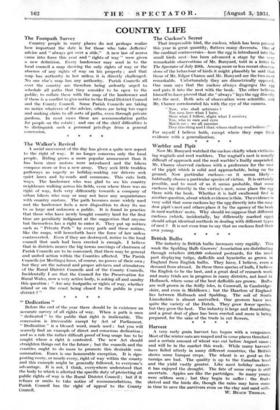The Walker's Revival
A social movement of the day has given a quite new aspect to the right of way. It no longer concerns only the local people. Riding grows a more popular amusement than it has been since motors were introduced and the hikers compose more or less a new army. They seek little trodden pathways as eagerly as holiday-making car drivers seek quiet lanes and by-roads and commons. This cuts both ways. The landowner who was glad to see his country neighbours walking across his fields, even where there was no right of way, feels very differently towards a company of urban hikers who may or may not have any acquaintance with country custom. The path becomes more widely used and the landowner feels a new disposition to deny its use to so large and unknown a public. It is found in practice that those who have newly bought country land for the first time are peculiarly indignant at the suggestion that anyone but themselves has a right to enter it. They put up notices such as Private Path" by every path and these notices, like the maps, will henceforth have the force of law unless controverted. Even if they are destroyed, notice to the local council that such had been erected is enough. I believe that in districts nearer the big towns meetings of chairmen of Parish Councils are to be convened, that there may be general and united action within the Counties affected. The Parish Councils (or Meetings) have, of course, no power of their own ; but they are the natural and proper advisers and stimulators of the Rural District Councils and of the County Councils. Incidentally I see that the Council for the Preservation for Rural Wales, now a very active body, is asking all and sundry this question : "Are any footpaths or rights of way, whether inland or on the coast being closed to the public in your district ? "






























 Previous page
Previous page